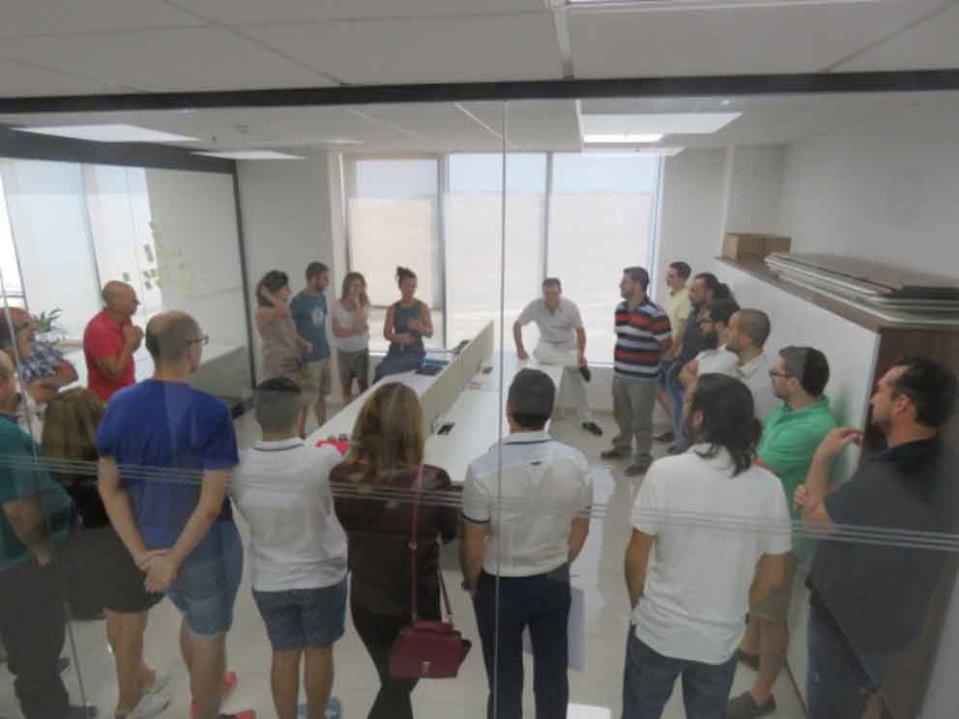Written by Alex Borg, MITA Innovation Hub Manager
The MITA Innovation Hub organises Design Thinking workshops for its startup founders, as it helps them give a crisper and more human dimension to their ideas that they want to transform into a business. However, MITA Innovation Hub Manager Alex Borg explains that Design Thinking is fast being taken up by corporate culture, and soon even governments, to humanise their services.

As part of its special funding programmes for startups, the MITA Innovation Hub (MIH) has been organising Design Thinking workshops to help startup founders become inspired when they ideate solutions that address a particular problem, and in doing so pass on real value to their customers.
The workshops are a collaboration with the University of Malta in-campus incubator Takeoff, and facilitated by Andy Linnas, himself an ex startup founder. They were tested for the first time during startAPP 2.0, the call for ideas using satellite data, and then repeated for the YouStartIT accelerator programme which will fund up to five startups for any digitally enabled business idea, a financial literacy app or a digital serious game to support the learning of science subjects.

In both programmes the take-up was high, with over 30 very engaged people attending, but not as high as the one organised for YouStartIT on 20th and 30th August, since a good number of late applicants have had to be left out, while the first edition of the workshops had also included a dozen MITA employees.
But what exactly is Design Thinking? And why do startups find it so interesting?
Traditionally, design has always been treated as something that is delegated to the graphic designers and creatives, people who somehow slap sleek, stylish wrapping round a product to enhance it. Over time we have learnt, that it is not enough to just make an already developed product more attractive through nicely polished design. To add real value to users of that product, the design of the product itself requires a bottom-up human-centred approach that takes into account all aspects of the product: from the area of intervention (or context) and a clear definition of the problem that the product is trying to address, to human emotion and experience that the product will stir among its consumers. The reason is that when we consume something, there is a holistic experience that we take in that transcends the material delivery. Think, for example, of the Harley Davidson or Prada brands. It is not just the material value, that we appreciate, but also the emotion and meaning of the experience that eventually creates loyalty to that brand.

As a term of comparison, in the past, many industries, including IT, tended to delegate quality to a quality control team that would rigorously check a product at the end of its production cycle to ensure it is free from defects. That outlook changed completely with the adoption of a quality assurance mindset in later years. The latter meant that proper care had to be devoted throughout every stage of production of a component or process that led to that product.

Design thinking is in many ways similar. It is a way of how to build a solution, which could be a product, but also a service, process or even a strategy that takes into account the human side of things. And because humans are emotional beings, design thinking focuses on looking at design as a synthesis of empathy, integration, positivity, experimentation and collaboration.

The beauty of Design Thinking is that it is a transformational approach that helps ideators give a better and crisper shape to their idea while guiding them on the right questions to ask. Global design gurus IDEO identify three principles which should guide any human institution that wants to design a solution to a problem. These are desirability, feasibility and viability:
Desirability. Who is the user? Will they actually want to use it? Will they be ready to buy it? What is their current solution to their problem? Are they even aware they have a problem?
Feasibility. Can the startup actually build the solution? Will it work? How long will it take the startup to build it?
Viability. Does the customer have the budget for it? Will it achieve a product-market fit? How much money does the startup need to build it? And will they make enough money to survive and make a profit?